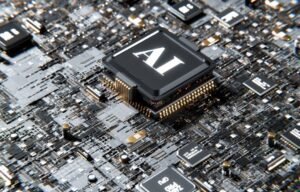How Does Natural Language Understanding (NLU) Work?
Natural Language Understanding (NLU) is a subfield of Artificial Intelligence (AI) that focuses on the interaction between computers and human language. It aims to enable machines to understand and interpret human language in a way that is similar to how humans comprehend it. This technology plays a crucial role in various applications such as voice assistants, chatbots, and sentiment analysis tools.
Key Takeaways
- Natural Language Understanding (NLU) enables computers to comprehend and interpret human language.
- It plays a vital role in various applications such as voice assistants, chatbots, and sentiment analysis tools.
- NLU involves several steps including tokenization, syntactic parsing, semantic analysis, and entity recognition.
- Machine learning and deep learning techniques are often used in NLU systems to improve accuracy.
- The performance of NLU systems can be evaluated using metrics like precision, recall, and F1 score.
NLU involves several steps to process and understand human language. The first step is tokenization, where the text is divided into individual words or tokens. This helps in breaking down complex sentences into smaller units for analysis. *Tokenization enables efficient text processing and analysis.*
After tokenization, the text undergoes syntactic parsing, which involves analyzing the grammatical structure of the sentence. This step helps in understanding the relationships between words and their roles in the sentence. *Syntactic parsing is essential to interpreting the meaning of a sentence accurately.*
Next, semantic analysis is performed to extract the meaning and intent behind the text. This step involves understanding the context, as well as the relationships between words and phrases. *Semantic analysis allows for a deeper understanding of the text beyond its surface meaning.*
Another important task in NLU is entity recognition, which involves identifying and classifying named entities such as names, dates, locations, and organizations in the text. This helps in extracting valuable information from the text for further analysis. *Entity recognition is crucial for extracting structured data from unstructured text.*
Table 1: NLU Techniques and Technologies
| Technique/Technology | Description |
|---|---|
| Tokenization | Dividing text into individual words or tokens. |
| Syntactic Parsing | Analyzing the grammatical structure of sentences. |
| Semantic Analysis | Extracting meaning and intent from text. |
| Entity Recognition | Identifying and classifying named entities. |
| Machine Learning | Using algorithms to improve system accuracy. |
Machine learning and deep learning techniques are often utilized to enhance the accuracy of NLU systems. These techniques involve training models on large datasets and optimizing them to make predictions on new, unseen data. *Machine learning and deep learning enable NLU systems to continuously improve their performance over time.*
To evaluate the performance of NLU systems, various metrics are used. Some commonly used metrics include precision, recall, and the F1 score. Precision measures the ratio of correctly identified information to all the information identified, while recall measures the ratio of correctly identified information to all the relevant information. The F1 score combines precision and recall into a single measure, considering both false positives and false negatives. *Metrics like precision, recall, and F1 score provide insights into the performance of NLU systems.*
Table 2: Performance Evaluation Metrics
| Metric | Description |
|---|---|
| Precision | Ratio of correctly identified information to all identified information. |
| Recall | Ratio of correctly identified information to all relevant information. |
| F1 Score | Combines precision and recall into a single measure, considering false positives and false negatives. |
Natural Language Understanding (NLU) continues to advance and evolve as research and development in the field of AI progress. With ongoing improvements in machine learning algorithms and access to vast amounts of data, NLU systems are becoming increasingly accurate and effective. *The future of NLU holds great promise in enabling machines to understand and interpret human language with a higher level of accuracy.*
Table 3: Advancements in NLU
| Advancement | Description |
|---|---|
| Machine Learning Enhancements | Improved algorithms and models for better accuracy. |
| Larger Training Datasets | Access to additional data for training and optimization. |
| Deep Learning Techniques | Utilizing neural networks for more robust NLU models. |

Common Misconceptions
Misconception 1: NLU is the same as Natural Language Processing (NLP)
One common misconception people have is that Natural Language Understanding (NLU) and Natural Language Processing (NLP) are the same thing. While these two terms are related, they are not interchangeable. NLP refers to the broader field of using computers to understand and process human language, which includes tasks like machine translation and sentiment analysis. NLU, on the other hand, specifically focuses on teaching computers to understand and interpret the meaning of human language.
- NLU is a subset of NLP that focuses on understanding the meaning of human language.
- NLP encompasses a wider range of tasks beyond just understanding language.
- While NLU is necessary for effective communication with machines, NLP includes additional components like language generation and speech recognition.
Misconception 2: NLU is only used in voice assistants
Another common misconception is that NLU is only used in voice assistants like Siri or Alexa. While it is true that NLU plays a crucial role in voice-based interactions, its applications go far beyond that. NLU is used in various industries and domains, including customer service, healthcare, and finance. It helps power chatbots, virtual assistants, and automated systems that can understand and respond to user queries and requests.
- NLU is widely used in customer service applications to provide self-service options and answer frequently asked questions.
- In healthcare, NLU can help analyze and understand patient data or assist in diagnosing medical conditions.
- In finance, NLU can be used for sentiment analysis of news articles or to extract relevant financial information from text documents.
Misconception 3: NLU is able to fully understand and interpret any language
Many people mistakenly believe that NLU is capable of fully understanding and interpreting any language. However, this is not the case. NLU models need to be trained on specific languages and may not perform well on languages they have not been trained on. Additionally, the complexity and nuances of different languages pose challenges for NLU systems. Understanding slang, idioms, or cultural references can be particularly difficult.
- NLU models typically perform better on languages they have been trained on.
- Some languages may have limited resources or datasets to train NLU models effectively.
- The performance of NLU systems can vary based on the complexity and uniqueness of a given language or dialect.
Misconception 4: NLU is a solved problem
There is a misconception that NLU is a solved problem, meaning that there are already perfect systems capable of fully understanding human language. However, this is far from the truth. NLU is a rapidly evolving field, and there are still many challenges to overcome. While significant progress has been made, there are still limitations in understanding context, sarcasm, or ambiguity in language.
- NLU systems still struggle with nuanced language and can misinterpret certain phrases or statements.
- Developing NLU models that can accurately understand context remains an active area of research.
- NLU is an ongoing field with continuous advancements and improvements being made.
Misconception 5: NLU can replace human understanding of language
Finally, there is a common misconception that NLU can completely replace human understanding of language. While NLU has made great strides in various applications, it is not meant to replace human intelligence. NLU systems can process and analyze large amounts of text data efficiently, but they lack the human-level understanding that comes with context, empathy, and the ability to grasp subtle nuances.
- NLU systems are designed to assist humans in tasks involving language understanding, not replace them.
- Human intervention and supervision are still necessary to ensure the accuracy and reliability of NLU systems.
- NLU complements human language understanding but does not replicate it entirely.

Table: Evolution of NLU Technology
Natural Language Understanding (NLU) technology has gone through several advancements over the years. This table highlights key milestones in the evolution of NLU.
| Year | Advancement |
|---|---|
| 1950 | Alan Turing proposes the “Turing Test” as a measure of machine intelligence. |
| 1966 | Joseph Weizenbaum develops ELIZA, an early example of natural language processing. |
| 1986 | Gerald Gazdar and Ewan Klein propose the Head-Driven Phrase Structure Grammar (HPSG) model. |
| 1990 | Rule-based systems gain popularity for NLU, based on predefined linguistic rules. |
| 1997 | IBM’s Deep Blue defeats world chess champion Garry Kasparov, showcasing advancements in AI. |
| 2003 | Stanford University introduces the Stanford Parser, a widely-used NLU tool. |
| 2014 | Google develops the word2vec model, enabling better word representation in NLU. |
| 2017 | OpenAI releases the GPT-2 language model with 1.5 billion parameters. |
| 2019 | BERT (Bidirectional Encoder Representations from Transformers) model achieves state-of-the-art results. |
| 2021 | GPT-3 (Generative Pre-trained Transformer 3) with 175 billion parameters becomes available. |
Table: Common NLU Applications
NLU technology finds its applications in various fields, revolutionizing how we interact with machines. This table presents some common use cases of NLU.
| Application | Description |
|---|---|
| Virtual Assistants | Smart speakers like Amazon Echo and virtual assistants like Siri utilize NLU to understand and respond to user commands. |
| Chatbots | AI-powered chatbots employ NLU to converse with users, answer queries, and provide personalized information. |
| Customer Support | NLU is used in automated customer support systems to interpret customer inquiries and provide relevant solutions. |
| Sentiment Analysis | NLU techniques enable sentiment analysis of textual data, helping businesses gauge public opinion and customer satisfaction. |
| Machine Translation | Online translation services utilize NLU models to accurately translate text across different languages. |
| Information Retrieval | NLU aids in search engines’ ability to understand user queries and retrieve relevant web pages or documents. |
Table: Challenges in NLU Development
NLU technology is not without its complexities and challenges. This table highlights some of the key obstacles faced in NLU development.
| Challenge | Description |
|---|---|
| Ambiguity | Language is inherently ambiguous, making it challenging for NLU models to accurately interpret user intent. |
| Contextual Understanding | NLU struggles to understand context as the meaning of words and phrases can change based on the surrounding information. |
| Slang and Idioms | NLU systems often face difficulties in comprehending slang, idiomatic expressions, and cultural references. |
| Multilingual Support | Developing NLU models capable of handling multiple languages and dialects presents a significant challenge. |
| Domain Specificity | NLU performance can vary across different domains, requiring tailored models for specific industries or topics. |
| Data Availability | Acquiring sufficient high-quality training data for NLU is often a laborious and time-consuming task. |
Table: Comparison of NLU Platforms
Various companies offer NLU platforms, each with its unique features and capabilities. This table compares some popular NLU platforms.
| Platform | NLU Features | Applications | Supported Languages |
|---|---|---|---|
| IBM Watson | Tasks, intents, entities, sentiment analysis, dialog management | Virtual assistants, chatbots, customer support | Multiple languages |
| Google Cloud NLU | Entity recognition, sentiment analysis, content classification | Social media analysis, content moderation, chatbots | 50+ languages |
| Microsoft Azure NLU | Named Entity Recognition (NER), language generation, text analytics | Content personalization, knowledge extraction, virtual agents | Multiple languages |
| Amazon Comprehend | Keyphrase extraction, entity recognition, sentiment analysis | Brand monitoring, market research, content recommendation | Multiple languages |
Table: Impact of NLU on Efficiency
NLU systems have revolutionized various industries by enhancing efficiency and productivity. This table highlights the impact of NLU on different sectors.
| Sector | Impact of NLU |
|---|---|
| Healthcare | Automated medical transcription and clinical documentation, improving patient care and reducing administrative burden. |
| Finance | Automated customer support and chatbots, streamlining banking services and reducing response times. |
| E-commerce | Enhanced product search, personalized recommendations, and conversational shopping experiences for customers. |
| Travel | Efficient flight booking, itinerary management, and instant customer support for travel-related queries. |
| Education | Automated grading, intelligent tutoring systems, and voice-enabled learning assistants for personalized education. |
| Legal | Automated contract analysis, legal document review, and research support for law firms and legal professionals. |
Table: Ethical Considerations for NLU
The development and deployment of NLU technology raise various ethical considerations. This table presents some important ethical aspects to address.
| Consideration | Description |
|---|---|
| Bias Mitigation | NLU algorithms should be trained on diverse datasets to minimize bias towards specific demographics or cultures. |
| Privacy | Proper consent should be obtained from users, and data protection measures must be implemented to safeguard personal information. |
| Transparency | NLU models should provide clear explanations of their decision-making process, ensuring transparency and accountability. |
| Job Displacement | Efforts should be made to address potential job displacement due to automation enabled by NLU technology. |
| Security | NLU systems should be protected against malicious attacks and strengthened to prevent data breaches or manipulation. |
Table: NLU Performance Metrics
Assessing the performance of NLU models is crucial to measure their effectiveness. This table presents some common evaluation metrics used in NLU.
| Metric | Description |
|---|---|
| Precision | Measures the fraction of correctly identified positive instances among all instances classified as positive. |
| Recall | Calculates the fraction of correctly identified positive instances out of all actual positive instances. |
| F1 Score | Represents the harmonic mean of precision and recall, providing a balanced evaluation of a model’s performance. |
| Accuracy | Determines the proportion of correctly classified instances out of the total number of instances. |
| Mean Average Precision (MAP) | Averages precision values at different recall levels, commonly used in information retrieval tasks. |
Table: Future Trends in NLU
The field of NLU is constantly evolving, shaping the future of human-machine interaction. This table highlights some promising trends in NLU.
| Trend | Description |
|---|---|
| Contextual Understanding | NLU models will continue improving their ability to understand nuanced context, promoting more accurate and natural interactions. |
| Language Generation | Advancements in NLU will enable machines to generate human-like, contextually appropriate responses in conversations. |
| Multi-Modal NLU | Integration of NLU with visual and audio processing capabilities will enable understanding of multi-modal inputs. |
| Domain Adaptation | NLU models will become more adaptable to specific domains, leading to improved performance in specialized industries. |
| Explainability | Future NLU models will provide more transparent explanations for their predictions, promoting trust and user understanding. |
In conclusion, Natural Language Understanding (NLU) technology has witnessed significant advancements over the years, revolutionizing various industries and enhancing human-machine interaction. From the evolution of NLU technology to its applications, challenges, and ethical considerations, this article has explored diverse aspects of how NLU works. Additionally, tables showcasing comparisons, impacts, metrics, and future trends have provided valuable insights into the world of NLU. As advancements continue to unfold, NLU holds immense potential in transforming the way we communicate with machines, streamlining processes, and improving user experiences.
Frequently Asked Questions
How does Natural Language Understanding (NLU) work?
Natural Language Understanding (NLU) is a branch of artificial intelligence that focuses on enabling machines to comprehend and interpret human language. It involves several processes and techniques:
- Text Tokenization: Breaking down a text into smaller units like words, sentences, or phrases.
- Lexical Analysis: Identifying the grammatical structure and the meaning of words.
- Semantic Parsing: Understanding the meaning and relationships between words in a sentence.
- Word Sense Disambiguation: Resolving ambiguous words and their correct meanings based on context.
- Named Entity Recognition: Identifying and classifying named entities like names, locations, dates, etc.
- Sentiment Analysis: Determining the sentiment or emotions expressed in a text.
- Language Generation: Generating human-like responses or summaries based on the understanding of the input.
How can Natural Language Understanding benefit businesses?
Natural Language Understanding can offer several benefits to businesses:
- Improved Customer Service: NLU enables chatbots and virtual assistants to understand and respond to customer queries more effectively.
- Efficient Data Analysis: NLU allows businesses to extract meaningful insights from large volumes of unstructured data like customer feedback or social media posts.
- Enhanced User Experience: By understanding user inputs, NLU can provide personalized recommendations and tailored experiences.
- Automated Processes: NLU can automate tasks like email filtering, content categorization, or sentiment analysis, saving time and effort.
- Competitive Advantage: Implementing NLU technology can give businesses an edge over competitors by improving efficiency and customer satisfaction.
What are the challenges of Natural Language Understanding?
Natural Language Understanding poses several challenges:
- Ambiguity: Language is often ambiguous, and understanding the intended meaning can be challenging.
- Contextual Understanding: Interpreting language requires considering the context in which it is used, which can be complex.
- Language Variations: Different languages, dialects, and accents make NLU more difficult.
- Domain-Specific Knowledge: Understanding specialized or technical language requires domain-specific knowledge.
- Handling Errors: NLU systems need to handle input errors, misspellings, or incomplete sentences.
- Privacy and Ethics: Extracting meaning from text raises concerns about privacy and ethical considerations.
What are some real-world applications of Natural Language Understanding?
Natural Language Understanding finds applications in various domains:
- Virtual Assistants: Voice-enabled assistants like Siri, Alexa, or Google Assistant utilize NLU for understanding user commands and inquiries.
- Customer Support Chatbots: Chatbots can assist customers by understanding their queries and providing relevant information or solutions.
- Sentiment Analysis: NLU is used to analyze social media posts, customer feedback, or reviews to understand the sentiment and opinions.
- Language Translation: NLU enables machine translation services like Google Translate to interpret and translate text across different languages.
- Information Retrieval: Search engines employ NLU techniques to understand user queries and provide accurate search results.
What are some popular Natural Language Understanding tools or platforms?
There are several popular tools and platforms for Natural Language Understanding:
- Google Cloud Natural Language API
- IBM Watson Natural Language Understanding
- Amazon Comprehend
- Microsoft Azure Cognitive Services Language Understanding (LUIS)
- Stanford NLP Toolbox
How does Natural Language Understanding differ from Natural Language Processing?
Natural Language Understanding (NLU) and Natural Language Processing (NLP) are closely related but have some differences:
- NLP focuses on the automatic manipulation of language, including tasks like text summarization, speech recognition, etc.
- NLU is a subset of NLP that specifically aims to understand human language and extract meaning.
- NLP involves both syntactic and semantic analysis, while NLU primarily focuses on semantic understanding.
- NLU is concerned with interpreting and comprehending language, whereas NLP encompasses a wider range of language-related tasks.
What is the importance of training data for Natural Language Understanding models?
Training data plays a crucial role in Natural Language Understanding:
- It is used to train machine learning models, making them capable of understanding and interpreting human language.
- The quality and diversity of training data influence the performance and accuracy of NLU models.
- Annotated training data, labeled with correct interpretations, is essential for supervised learning approaches.
- Large amounts of training data help in capturing the nuances and variations present in human language.
What is the future of Natural Language Understanding?
Natural Language Understanding is expected to continue progressing, leading to exciting developments:
- Improved Accuracy: Advancements in machine learning techniques and training data will enhance the accuracy of NLU models.
- Deeper Understanding: NLU systems will gain a better understanding of context, nuances, and subtleties in human language.
- Advanced Applications: NLU will find applications in more domains, including healthcare, finance, legal, and education.
- Multilingual Capabilities: NLU models will continue to improve in handling various languages, dialects, and accents.
- Human-like Interactions: NLU-driven virtual assistants will become even more conversational and indistinguishable from humans.




